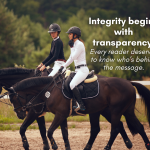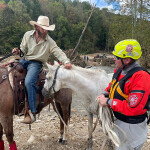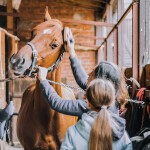Explore the steep and rising costs of horseback riding, from show fees to gear. Discover budget-friendly strategies to combat elitism and ride affordably.
The image of the equestrian world often conjures up scenes of polished boots, gleaming horses, and immaculate show arenas. Yet, beneath the idyllic surface lies a growing conversation about equestrian accessibility and the rising cost of horseback riding. Equestrian sport cost has always been a challenge, but increasing horse show fees and other expenses raise the question: has the cost of participation always been this high, or are new financial barriers making it even harder for aspiring riders to join the sport?
We explore the steep costs associated with equestrian sports. We will dive into how these costs impact accessibility, and offer practical advice on navigating this expensive world.
Table of contents [Show]
The Rising Costs of Equestrian Sports
Horseback riding has never been cheap. From the purchase of a horse to feed, veterinary care, training, and competition fees, participating in equestrian sports requires significant financial investment. For those wondering, “How much does horseback riding cost per year?” recent trends suggest these costs have reached unprecedented levels. A few contributing factors include:
- The Global Economy
Rising feed costs, transportation expenses, and equipment prices have followed inflation trends, putting further strain on equestrian budgets. Additionally, competitive circuits introduce escalating entry fees and memberships that can be daunting for anyone outside the highest income brackets.
For example, the cost of a CWD Classic SE02 grain/calf model started around $4,500 in 2020, whereas now in 2025, the same saddle starts at around $6,500.
- Commercialization of the Sport
As equestrian sports gain visibility on national and international platforms, the industry caters increasingly to elite riders and larger sponsorships, pushing smaller, independent participants further to the margins.
- Shift in Ownership Models
The surge in high-value horse trading has transformed horses into luxury investments. For many, even leasing a horse; a traditionally cost-saving alternative, has become unaffordable.
Roots of Exclusivity in Equestrianism
Horseback riding has historically been associated with affluence. Land ownership, which is essential for horsekeeping, was historically exclusive to wealthy individuals. Over time, this limitation trickled down to the recreational space, reinforcing the cultural image of equestrianism as a pastime for the upper class.
However, affordability gaps seem to have widened in recent decades. While riding programs in local stables and beginner lessons once provided entry points for a broad spectrum of enthusiasts, these opportunities have diminished in availability over time, contributing to a cycle of exclusivity.
But does it have to stay this way? The equestrian world may be expensive but it doesn’t have to be inaccessible.
5 Tips to Ride Affordably
If you're passionate about horses but working within a budget, there are ways to make riding a reality without breaking the bank. Here are some practical strategies:
- Share Costs Through Leasing
Leasing a horse can significantly reduce the financial burden compared to owning one. Partial leases allow riders to pay only for the days they ride, splitting care expenses with the horse's owner.
- Seek Out Lesson Packages
Many barns offer discounts for riders who book lesson packages. Group lessons tend to be more affordable than private ones and can still provide excellent skill development.
- Buy Secondhand Gear
Purchasing used tack, riding apparel, and equipment from consignment stores, online marketplaces, or fellow riders can save you a substantial amount of money without sacrificing quality.
- Volunteer or Work in Exchange for Riding Time
Stables often have programs where you can exchange barn chores or assistant teaching roles for free or discounted riding opportunities. This option lets you build hands-on experience around horses as well.
- Lean Into Budget-Friendly Disciplines
While some disciplines, like show jumping, require high-end horses and equipment, others, such as pleasure riding, endurance, or working equitation, can be far less demanding financially.
5 Creative Strategies for Competitive Riders
For riders aspiring to reach national or international stages, affordability is an even greater challenge. But with determination, resourcefulness, and a bit of creativity, you can carve a path forward:
- Pursue Sponsorships within USEF Guidelines (updated July 10, 2025 for accuracy)
Navigating sponsorships as an amateur rider can be a valuable way to help offset the high costs of competition, training, and equipment. However, it’s essential to fully understand what’s permitted under the United States Equestrian Federation's (USEF) amateur guidelines. The 2025 version of Rule GR1306 outlines specific activities that may or may not impact your amateur status; including provisions around remuneration, social media involvement, and horse-related expenses. Because these rules evolve and contain important nuances, riders should carefully review the complete 2025 GR1306 rule to avoid unintentionally jeopardizing their eligibility. When in doubt, submitting a hypothetical scenario to USEF is the safest route. You can find the full 2025 rules here: https://www.usef.org/forms-pubs/XlV5U_6h2AE/gr1306-amateur-status
- Partner with Breeders or Owners
Many breeders and owners are willing to invest in ambitious riders who can bring exposure or results for their horses. You get access to quality horses without having to purchase them outright.
- Train Off-the-Track Thoroughbreds (OTTBs)
Retraining retired racehorses is an excellent way to access competition-level mounts at a fraction of the cost. Many OTTBs excel in jumping, dressage, and eventing after appropriate retraining.
- Crowdfund Smarter, Not Harder
Platforms like GoFundMe are becoming increasingly popular among equestrians looking to fund competition expenses. Craft a compelling story, market the campaign via social media, and be transparent about how funds will be used. Even better, offer that a portion of the funds, or any remaining funds left over will be directly donated to an equine related nonprofit you support.
- Compete Strategically
Choose events carefully based on accessibility and payout potential. Competing at lower-stakes events can help build your network, refine your skills, and minimize expensive travel costs early on.
How Can We Make Equestrianism More Inclusive?
The affordability challenges in equestrian sports are significant, and overcoming them will require concerted effort across the community. A few ideas to foster inclusivity include:
- Create Larger Scholarship Programs
Expanding financial aid opportunities for lessons, training, and competitions can give talented riders from less privileged backgrounds a greater chance to participate. Connect with local equine business owners and see if this is something they'd like to support or donate towards. Reach out to other non- equine related businesses who are passionate about community development. Find credible case studies, data and research showing the benefits of equestrian sports on youth and how if they support a scholorship or donate towards one they are directly helping less privileged youth in their community.
- Developing Community Programs
Partnerships between stables of different disciplines and local organizations could foster affordable introductory riding classes. Programs like these normalize the sport for younger riders while allowing young riders to learn basics in a variety of disciplines, without requiring full parental investment upfront. This can help parents and youth decide which discipline fits their lifestyle best at early stages in their development.
- Promoting Accessible Disciplines
Highlighting and celebrating budget-conscious equestrian endeavors can help reduce the stigma often associated with opting for "lesser-known" disciplines over major competitive pursuits. Research different educational clubs or associations and see how you can become involved. Learn about different disciplines and finding a group of likeminded equestrians who can help introduce you to more opportunities. There are an abundance of 4-H clubs, local carriage associations, local pony clubs, open arena nights, and more free to low-cost activities that can help place you where you want to evolve as an equestrian.
- Standardizing Entry Costs
Introducing standardized rates for competitions or subsidy models would help bridge the cost gap and level the playing field for less-funded riders.
Some horse shows have started adopting a flat daily fee system instead of the traditional pay-per-class model. With this approach, participants can compete in as many classes as they wish throughout the day for a single, fixed rate. Other local shows are waiving stall fees for those who register before the deadline. Talk to your trainers about tasks you can handle yourself to potentially reduce their fees. Some trainers may allow students to offset costs by helping with tasks like feeding, grooming, braiding, or exercising horses during the show. This not only saves the trainer time but also reduces their expenses for feeders, grooms, and caretakers at the show. Keep in mind that trainers often still need to manage care for the horses left at the barn, so your help can provide significant relief and cost savings on both fronts.
Making equestrian sports accessible does not mean diluting the standards, it means creating opportunities for committed and passionate individuals, regardless of their bank balance. The sport thrives when its community grows, and inclusivity is the key to ensuring that growth is sustainable. Sometimes, all it takes is a bit of creativity and determination to make it happen.
Final Thoughts
Riding and competing with horses inspires personal growth, teaches discipline, and connects us with the natural world. These are benefits the entire community should strive to share, not walls to be guarded by exclusivity. By creatively addressing the challenges of cost and accessibility, we can ensure equestrianism evolves into a more welcoming and diverse sport for everyone.
What steps have you taken to make horse riding more accessible? Share your thoughts, stories, and ideas. Together, we can help that little girl or boy with big dreams thrive in this sport.
Do you want more content like this? Take your passion for horses even further with our Premium Digital Subscription. For just $4.99/month, you'll get the full monthly digital edition of The Horse Review, weekly top news delivered to your inbox, exclusive discounts from trusted equine brands, monthly expert webinars and podcasts on training, health, and barn management with full access to our private subscriber community. Join a growing group of informed, inspired horse owners and equestrians who are staying ahead of the herd. Click here to subscribe .








